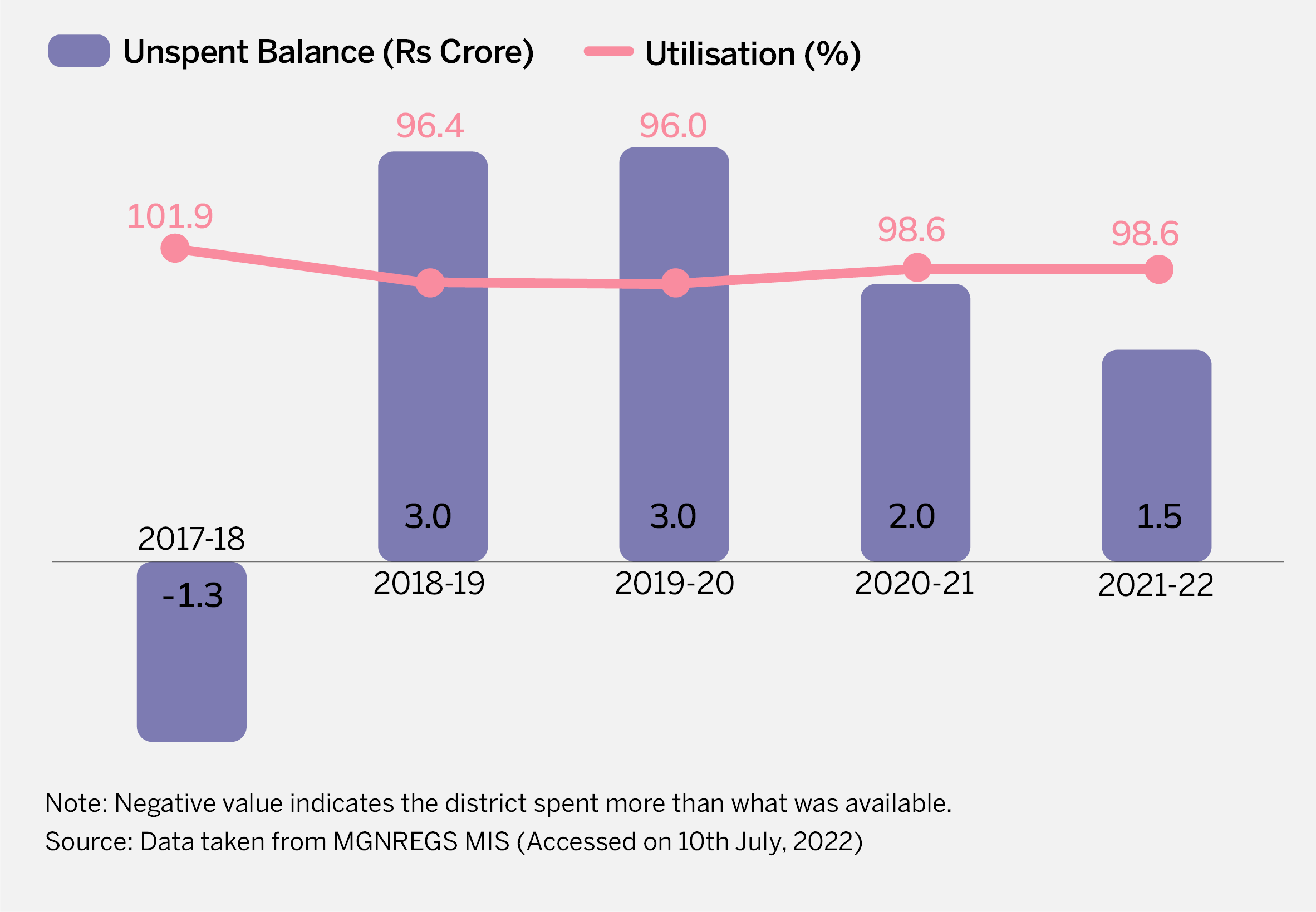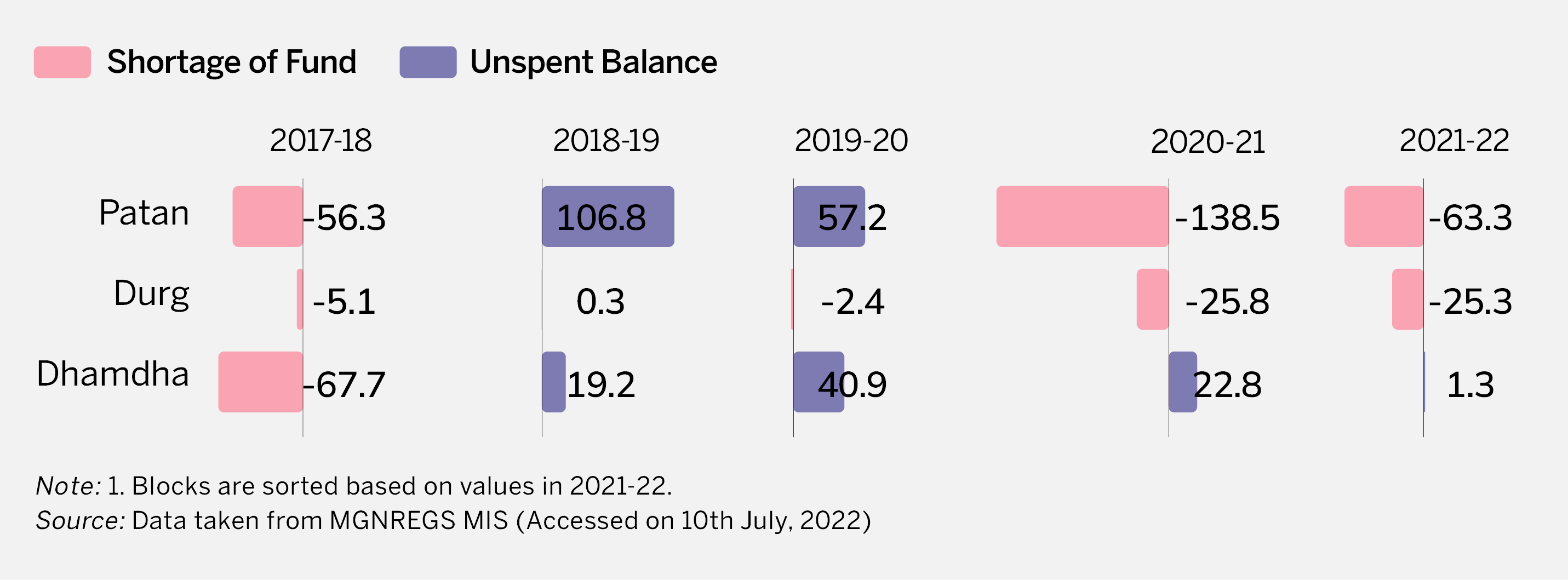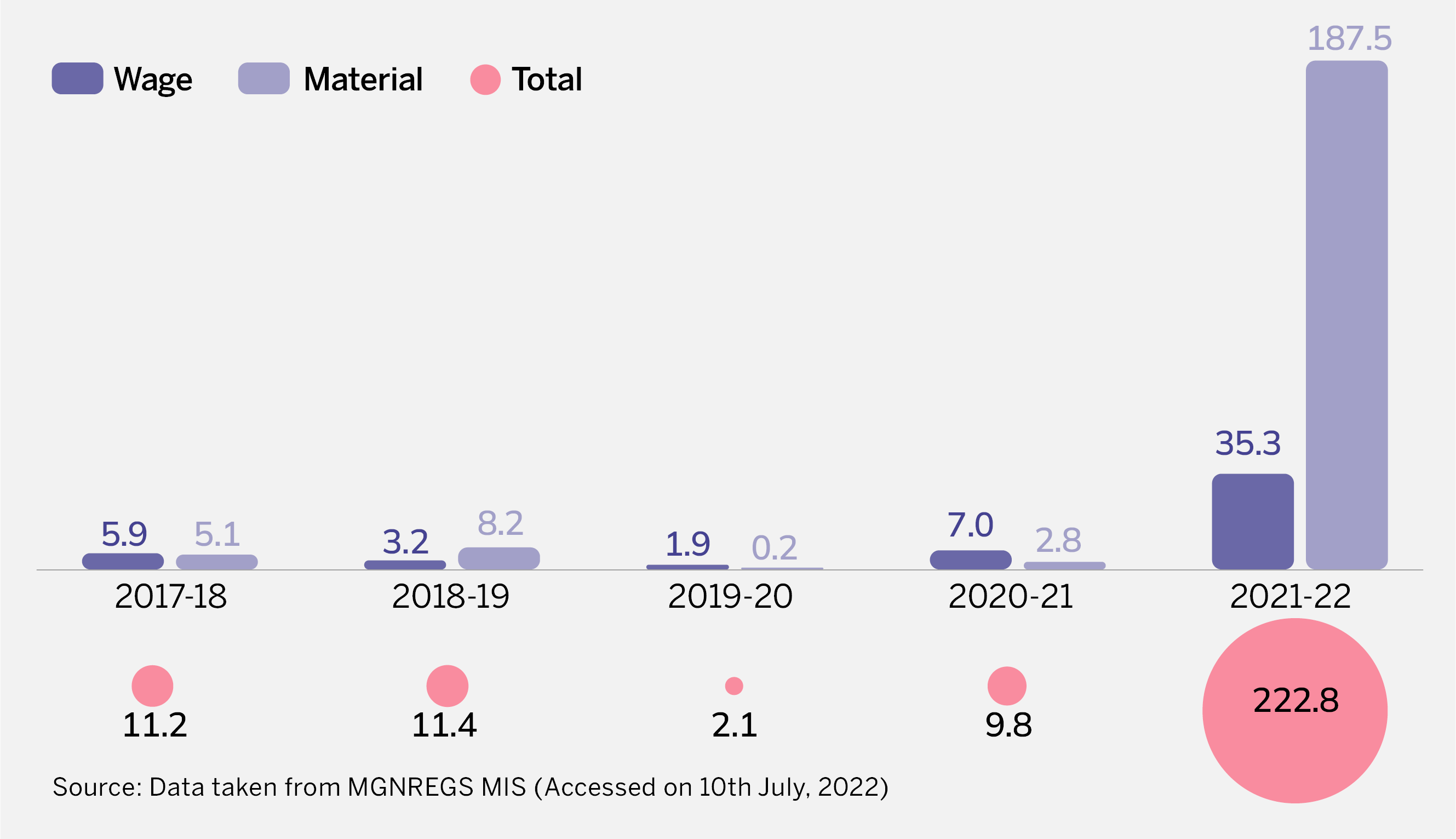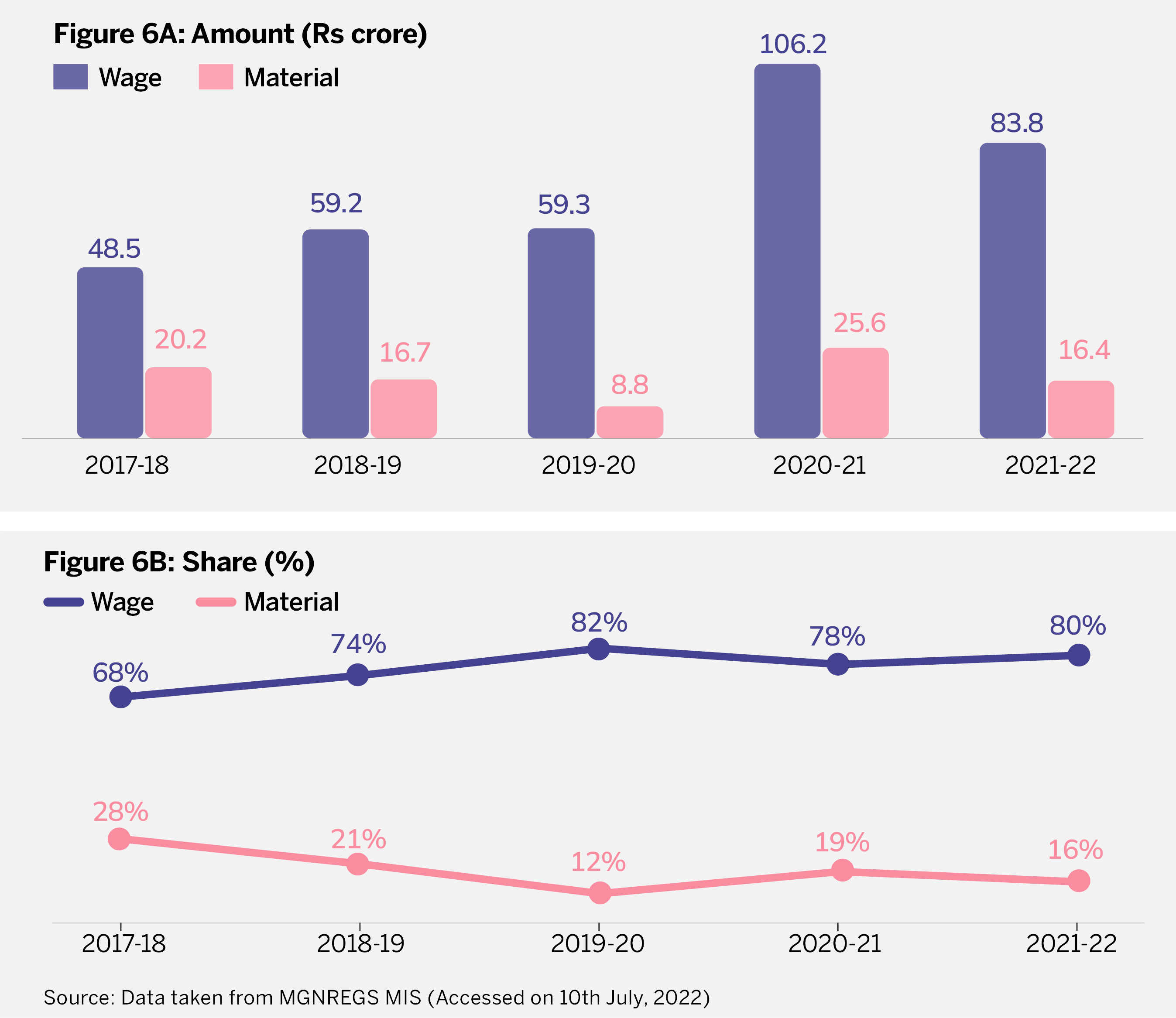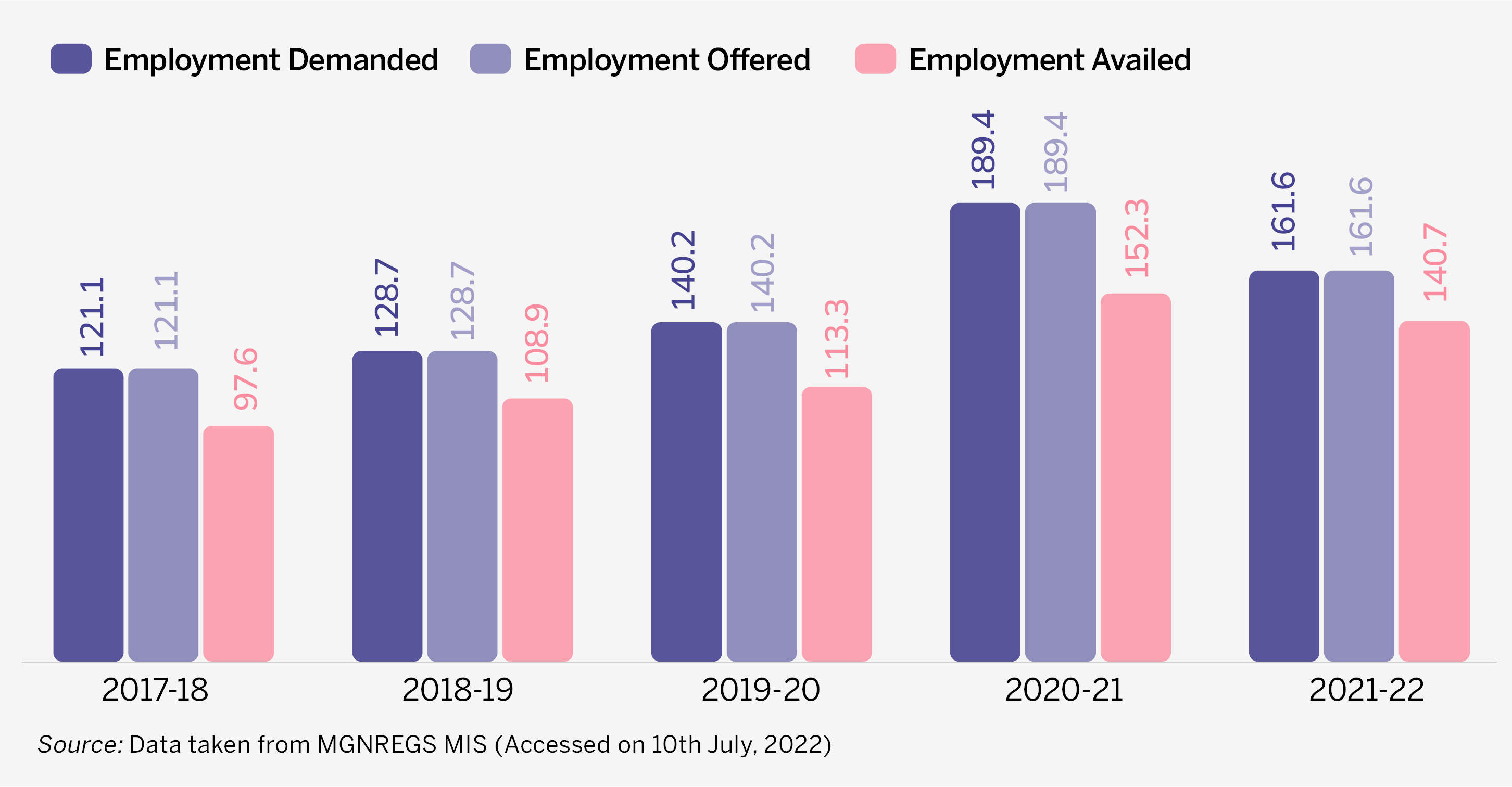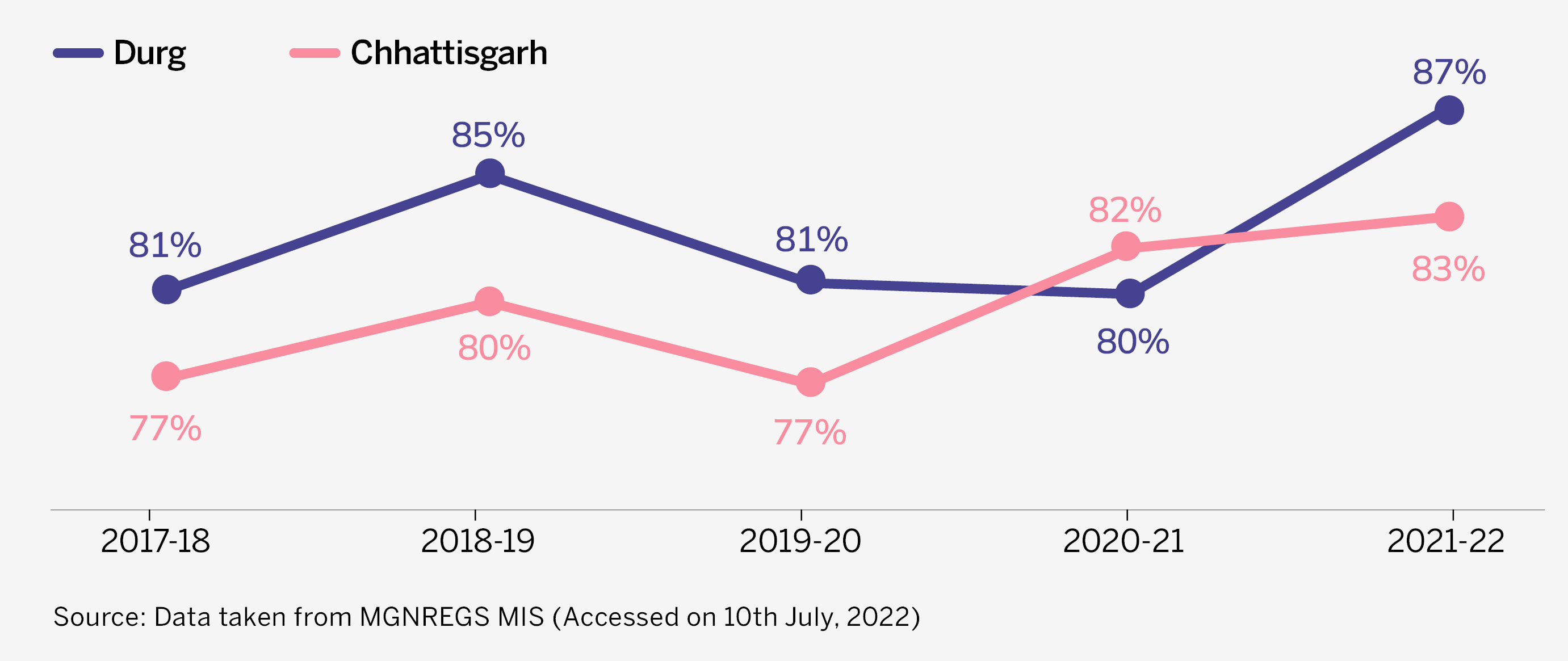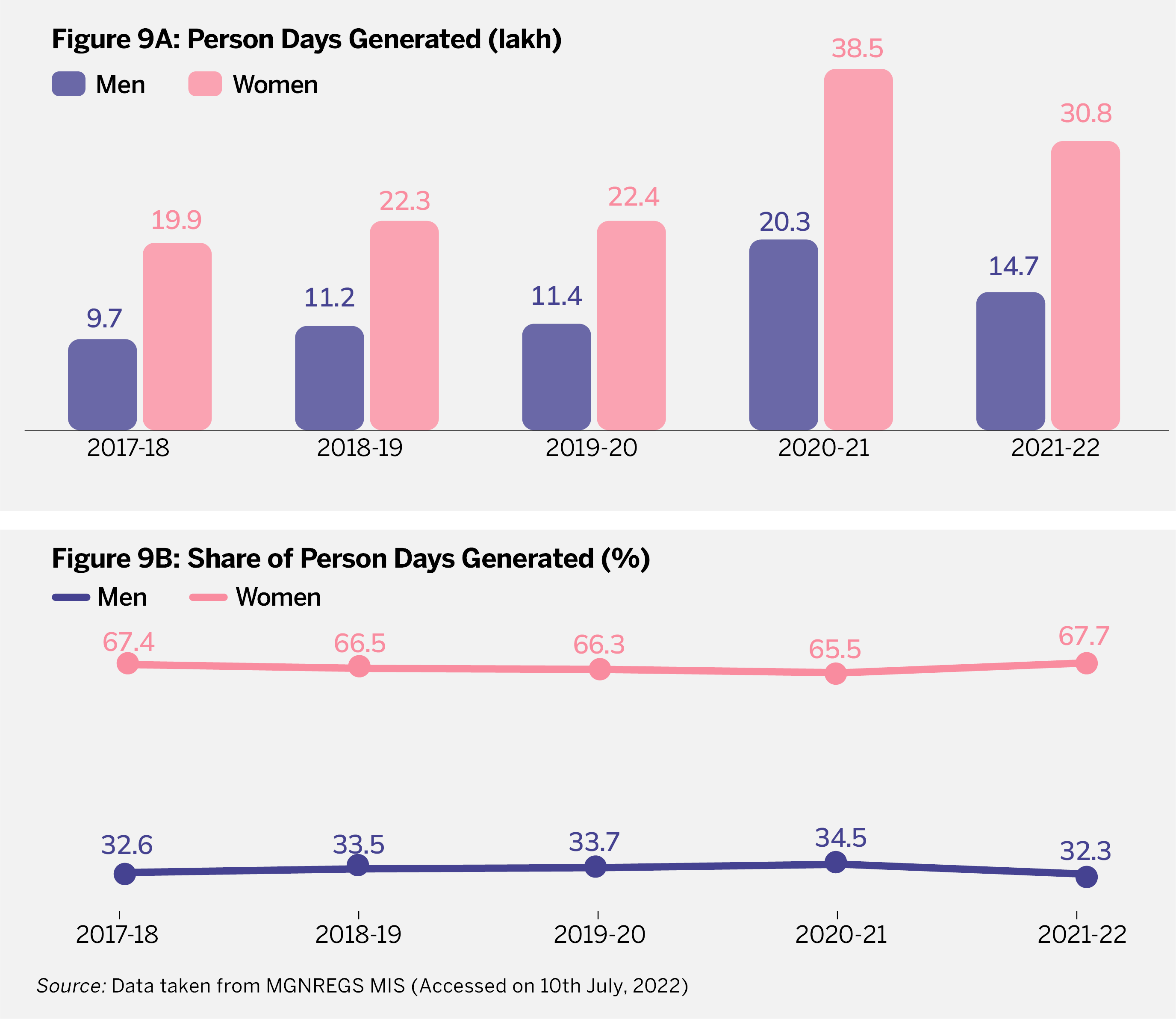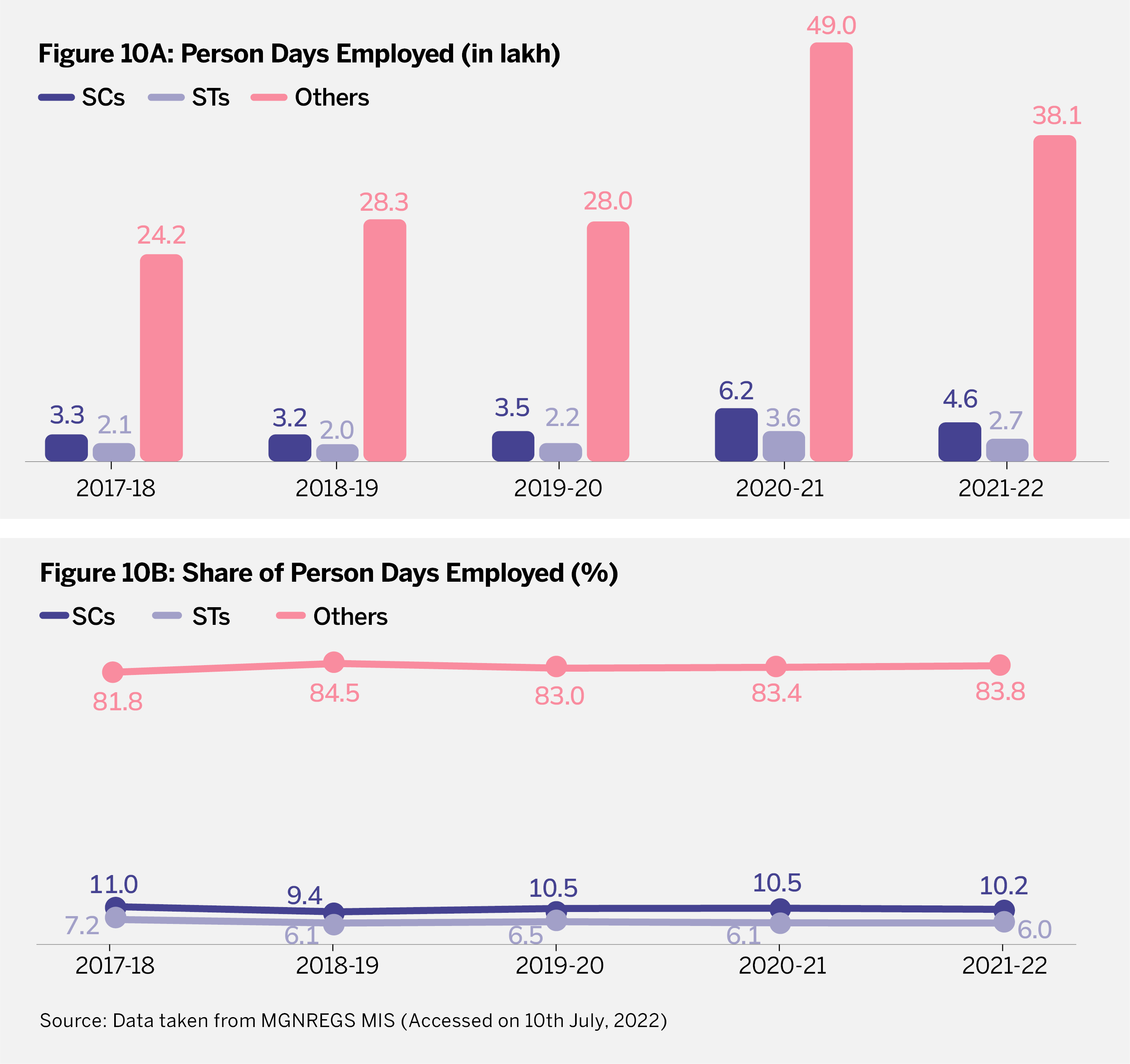01.
How Much Funds Were Made Available and How Much Was Spent?
Section titled How Much Funds Were Made Available and How Much Was Spent?Funds are made available to districts based on employment demand and the need for material. Figure 1 presents the trend of fund availability and expenditure in the district.
Figure 1: Fund Available and Expenditure (Rs Crore)
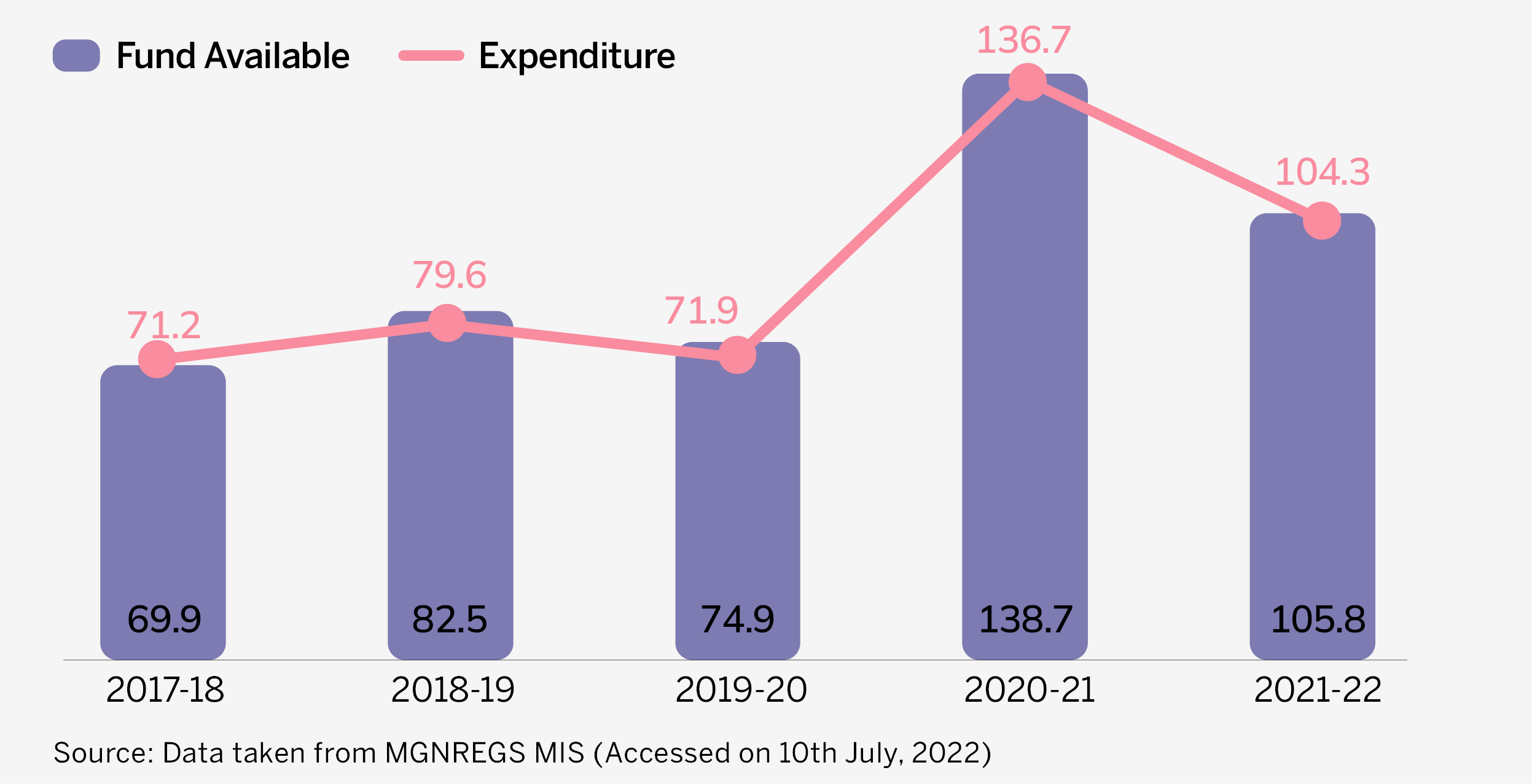
- The sudden increase in expenditure in 2020-21, when it almost doubled compared to 2019-20, indicates a high level of work demand because of the pandemic-induced lockdown and the subsequent economic slowdown.
- In 2021-22, expenditure fell 24% compared to 2020-21, but it was still 45% higher than the pre-pandemic level in 2019-20. This perhaps indicates that overall employment situation in places other than MGNREGS might have improved slightly compared to 2020-21, but is still much below pre-pandemic levels.
Figure 2 shows the total funds available and the total expenditure at the block level for the period from 2017-18 to 2021-22.
Figure 2: Cumulative Fund Available and Expenditure Between 2017-18 and 2021-22 (Rs Crore)

- Out of three blocks, Patan has the highest total allocation and expenditure, while Durg has the lowest allocation and expenditure.
